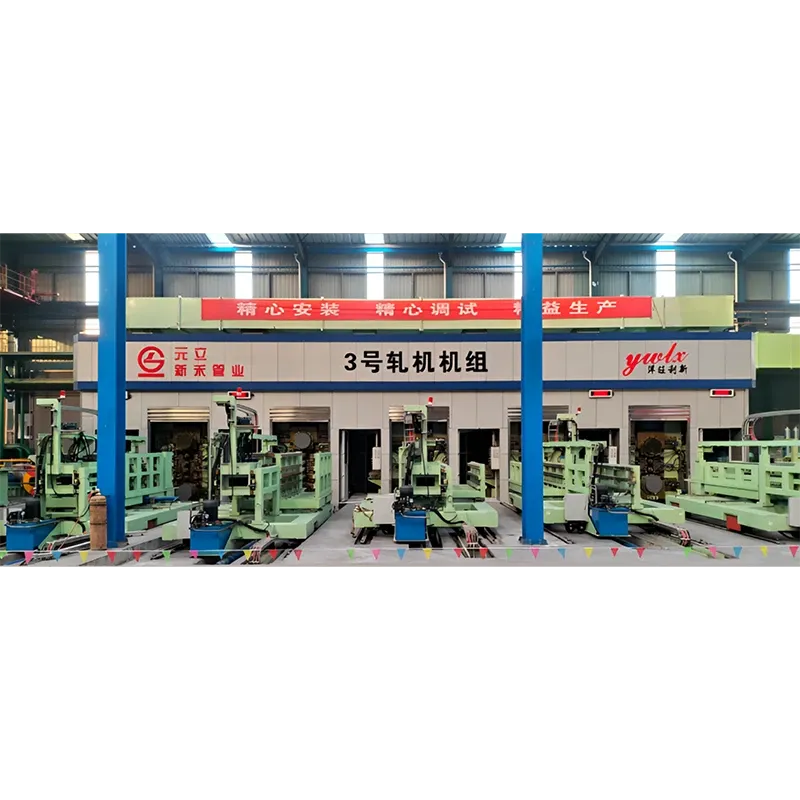
Hot Rolling Mill Technology: Manufacturing Excellence for Steel Production
Hot strip mill manufacturers serve as the backbone of global steel production, providing the essential equipment that transforms raw steel into versatile flat-rolled products. These industrial pioneers design and build massive rolling systems capable of processing steel slabs at temperatures exceeding 1,200°C, when the material becomes malleable enough for shaping. The engineering expertise required to create these complex production lines represents decades of accumulated metallurgical knowledge and mechanical innovation.

Hot Rolling Mill Operational Principles and System Components
A modern hot rolling mill constitutes an intricate symphony of mechanical, thermal, and control systems working in precise coordination. The process begins with reheating furnaces that bring steel slabs to optimal rolling temperatures, followed by scale breakers that remove surface oxidation. The primary roughing stands apply tremendous force to reduce slab thickness, while the finishing train of rolling stands progressively shapes the steel to final dimensions. State-of-the-art hot rolling machines incorporate advanced features like hydraulic gap control for precise thickness regulation, work roll bending systems to ensure flatness, and laminar cooling sections that control the steel's metallurgical properties. The complete hot rolling press line includes sophisticated automation systems that monitor and adjust thousands of process parameters in real-time, maintaining product consistency across changing production conditions. These integrated systems demonstrate mechanical engineering at its most impressive scale, with some rolling stands generating forces exceeding 10,000 tons while maintaining tolerances within hundredths of a millimeter.
Innovation Trends Transforming Hot Rolling Technology
The hot rolling mill equipment sector continues to evolve through several key technological innovations that address industry challenges. Energy efficiency has become a primary focus, with new mill designs incorporating waste heat recovery systems and optimized rolling sequences that minimize thermal losses. Manufacturers are developing novel roll cooling technologies that extend work roll life while improving strip surface quality, significantly reducing consumable costs. The integration of digital twin technology allows operators to simulate and optimize rolling processes virtually before implementing changes on physical equipment. Some advanced hot rolling machines now employ machine vision systems for real-time surface inspection, automatically detecting and classifying defects that might affect product quality. The development of ultra-compact mill designs offers smaller steel producers access to high-quality rolling capabilities that previously required massive capital investments. These innovations collectively contribute to making hot rolling operations more sustainable, cost-effective, and adaptable to the changing demands of global steel markets.
Economic and Strategic Aspects of Hot Rolling Mill Investments
The decision to invest in new hot rolling mill equipment represents a major strategic commitment for any steel producer, with implications lasting decades. The hot rolling mill price reflects not just the physical equipment but also the engineering expertise, proprietary technologies, and performance guarantees provided by the manufacturer. Leading suppliers now offer comprehensive service packages that include remote monitoring, predictive maintenance, and rolling process optimization as part of the total solution.
Lifecycle cost analysis has become essential in evaluating competing mill proposals, considering not only initial capital outlay but also long-term factors like energy consumption, maintenance requirements, and production flexibility. The growing emphasis on sustainable steel production has increased demand for mills capable of processing recycled scrap and alternative iron sources without compromising product quality. As global competition intensifies, hot strip mill manufacturers increasingly focus on delivering customized solutions that address specific regional market needs, whether for high-volume commodity production or specialized, value-added steel grades.
-
Indian Clients Visit YWLX to Inspect Skin-pass MillNewsJun.22,2025
-
Typical Products from Reversing Cold Rolling ProcessNewsMay.26,2025
-
Surface Finish Improvement through Skin Pass RollingNewsMay.26,2025
-
Integration of AGC Systems in Modern Cold Rolling MillsNewsMay.26,2025
-
Cold Rolling in the Context of High-Strength Steel DemandNewsMay.26,2025
-
AGC in Hot Rolling Mills: Challenges and SolutionsNewsMay.26,2025
-
Why Reversing Cold Rolling Mills Are Ideal for Specialty MetalsNewsMay.13,2025










